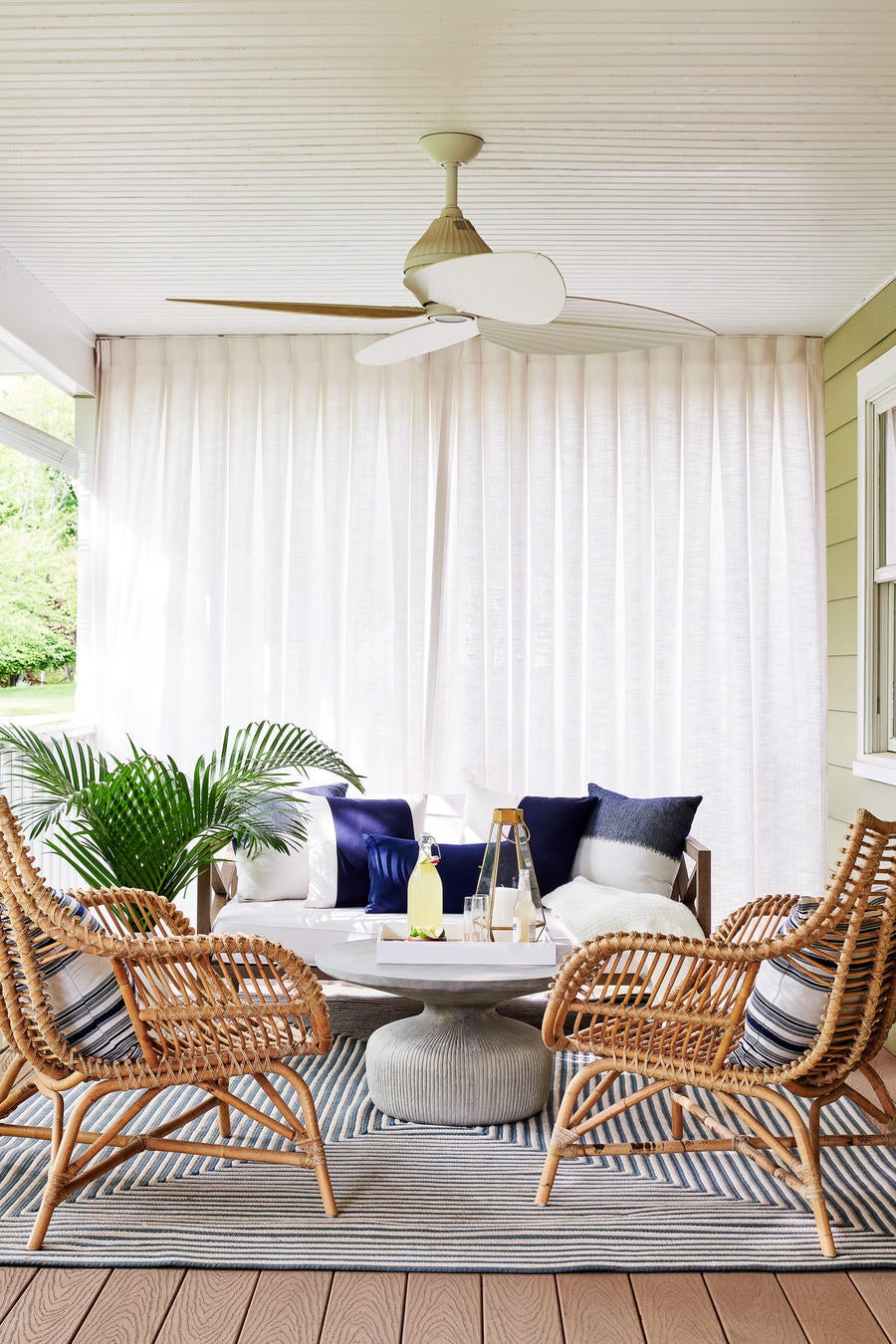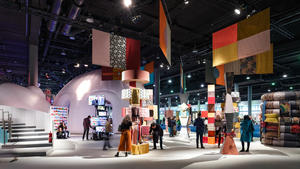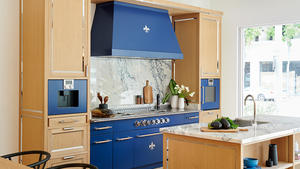At Business of Home, we’re committed to following the effects of the coronavirus pandemic and its economic fallout on the design trade. We’ll be collecting the most important stories here, in a—hopefully short-lived—regular feature. If your business is being affected or you have a tip, please drop us a line.
- For a comprehensive list of industry cancellations and postponements, click here.
- For advice on how to talk to clients, click here.
- For advice from PR pros on how to communicate in a crisis, click here.
- For a look at what the stimulus bill means for your firm, click here.
WORKING FROM HOME IS WORKING FOR BRANDS
Once it became clear that the two-week shutdown of most U.S. cities was going to be extended essentially indefinitely, Americans started realizing that months spent working from the couch was not going to cut it. Since the stay-at-home orders began trickling in last month, furniture companies like Mitchell Gold + Bob Williams have reported an uptick in home office furniture sales, evidence that people are looking to make the most of their new work-from-home reality.
John Christakos, the founder and CEO of Blu Dot, says that office furniture has traditionally been a “sleepy” category for the Minneapolis-based brand. “It’s not an area we’ve put a ton of focus on in the past, but we do have a nice assortment of desks, chairs and lamps,” he says. “The sales of our desks are up about four or five times from their normal rate. We only have a few desk chairs, but seating across the board is up by two or three times. We saw a definite shift right away.”
Office spaces require a unique balance of form and function. In March, 1stdibs saw a 15 percent increase in the office category compared to the same month last year. “What seems like a lifetime ago, most of us didn’t pay nearly enough attention to our workspaces,” says Anthony Barzilay Freund, editorial director at 1stdibs.
Outside of traditional retail, subscription furniture companies Feather and Fernish have both seen an increase in desk, lamp and chair rentals. Jay Reno, founder and CEO of Feather, reports a spike in items like shelving and even a demand for whiteboards. “It’s been helpful for us as we’re navigating this downturn, because our typical customer is someone who has just moved, and no one is really moving right now.”
Both brands have seen a mix of new customer sign-ups and existing customers adjusting what they rent. “This crisis is pretty acutely demonstrating the value that a furniture subscription service provides,” says Reno. “Instead of buying and committing to a desk that you may not need when you go back to your office, you can go through us and have it for as long as you need. No one knows how long this is going to go on, so having a level of flexibility is really helpful for our customers.”
In addition to home office furniture, Fernish has seen an increase in rentals of pillows and decorative accessories like mirrors and wall art. “When you’re spending so much time at home, and particularly with everyone having to do Zoom calls and show people what your space looks like, people are more conscious of what energy they’re giving off,” says Fernish co-founder Michael Barlow. “People are spending on their homes right now.”
Despite the unquestionably turbulent times, Reno is choosing to see the bright side. “The positive outcome of all this is that people are realizing how important home is to us all.”—Haley Chouinard
E-DESIGN TAKES THE STAGE
Now that in-person services have been strictly curtailed in much of the country, a new wave of e-design has arrived: Designers are embracing many of the tech tools that power online design services for the first time. BOH spoke to three pros who have recently incorporated virtual design into their firms.
As San Francisco–based designer Alden Miller wrestled with how to move forward with her projects on hold, she noticed that everyone seemed to be experiencing the same challenge: Now that the home has suddenly taken on a more multifaceted role, people are interacting with it differently—and longing to make some upgrades. Adding e-design to her firm’s menu of offerings came with a sense of urgency: “I keep asking myself, ‘How can we do things more quickly?’ The time is now. We can’t wait a month to solve the problems that we’re facing today,” she says.
Miller launched her e-design option on April 1 through a post on her site’s blog, calling it Shelter in a Redesigned Place. As part of the package, Miller is donating a portion of sales to the World Health Organization and to San Francisco–based mental health nonprofit the Access Institute. The process begins with a user-friendly questionnaire on her website, which offers three different e-design packages at various price points (the packages are less expensive than what she’d charge for similar services in person). Then, using Zoom calls and digital images of rooms, she is able to get a sense of the space and help clients reconfigure their homes. In the long run, Miller is open to seeing how things evolve and to providing high-end design expertise in smaller, more flexible packages, but for now, she’s excited by the idea of extending her reach beyond the Bay Area.

For New York–based designer Tina Ramchandani, the idea of e-design wasn’t completely unfamiliar. Finding a way to provide design services online was a business strategy that had been floating around in the back of her mind for some time, but the onset of the virus lit a fire under her to debut a virtual offering. Rather than calling the service e-design, she’s named it The Essentials package, which she hopes will impart an upscale air to prospective clients. “The actual transition took a lot of thinking,” Ramchandani explains. “It took me about three weeks to think through all of the test runs and get everything up and running. I wanted to make sure it was easy to understand and implement—a high-end service that’s not irritating or hard to use. It should still feel like you’re hiring a designer.” Tools like Zoom and FaceTime help facilitate consultations, and Ramchandani’s welcome package comes with detailed instructions to lead clients in all of the tasks they’ll have to DIY, from measurements to shopping to installation. Though she launched this platform only a week ago, Ramchandani is optimistic: She already has discovery calls lined up through the end of this week—all sweetened by the positive feedback she’s gotten from existing clients.
Robin Daly works in the greater Seattle area, and has had her e-design platform up and running for almost a month now. While she labels herself an emerging designer, Daly has already worked through projects with clients on virtual designs using DesignFiles to digitize the experience. On a consultation call, for instance, she had been talking to a client about paint colors for her home’s exterior—with time left on the call, Daly mentioned her e-design capabilities for interiors as well, and landed a new project. So far, she’s found that Zoom calls aren’t giving her a clear enough sense of a space, so she asks for photos from the client as well. After walking her client through the measuring process, Daly has been turning to her vendors and retail resources in an effort to support their businesses as well. “If I can spec art and pillow cases, they’re small enough items and I can have them shipped to the client. Thanks to Amazon, they’re used to receiving packages.” She has a few calls on the horizon, all with new clients who’ve approached her for e-design solutions in the past few weeks.
All three designers see e-design as a tangible way to support not only their businesses, but also their communities, in a difficult moment. As this protracted crisis drags on, many more designers will surely join their ranks.—Marina Felix
RECOMMENDED READING
- While it’s easy to blame retail’s sinking ship on the global response to COVID-19, fashion industry leaders had long felt pessimistic about 2020. Following up on its annual “State of Fashion” report released late last year, Business of Fashion has released “The State of Fashion 2020: Coronavirus Update” (available to BoF subscribers), which forecasts what the industry “will look like in the aftermath of this black swan event.” The report provides insight that goes beyond crisis management, looking ahead to subjects like long-term business model adaptations and value chain innovations.
- For textile manufacturers making masks or gowns, the American Association of Textile Chemists and Colorists is now offering free tests to determine whether the fabrics being used are medical grade. For more information, click here.
- When the coronavirus begins to ebb and societies adapt to a new post-pandemic reality, what remnants of this strange time will stick? According to a piece by Fast Company, Zoom. The videoconferencing platform and other comparable online tools have stepped into the void created by mandatory social distancing—which, as this piece argues, might be for the best.
- In what is likely a grim preview of the coming months, retail sales plunged in March, according to The New York Times. Total sales both in store and online dropped 8.7 percent from February, the largest decline since the U.S. Department of Commerce began tracking the data 30 years ago.
Homepage image: A living room designed by Tina Ramchandani | Lisa Russman




























